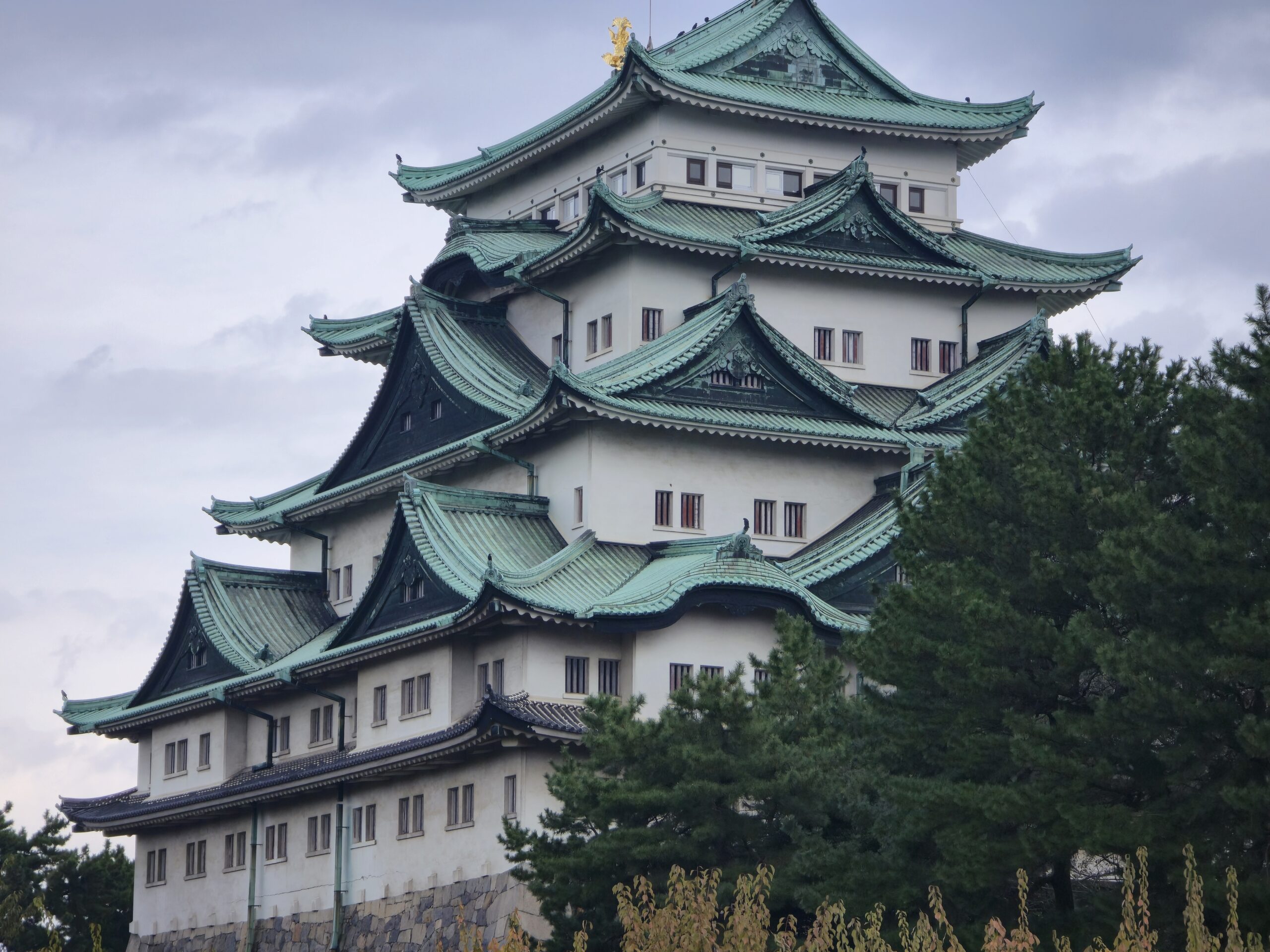Some trips don’t require long planning or big budgets — just the desire to step out of your usual rhythm and rediscover the joy of wandering. Yesterday, my husband and I did just that.
It was a chilly autumn morning in Gifu, the kind where you can already feel the season changing in the air. We decided, almost spontaneously, to take a day trip to Nagoya — something simple and close by, but enough to refresh our minds.
Living in Gifu makes Nagoya an easy escape. The JR train from Gifu to Nagoya takes less than 30 minutes, making it one of the most convenient short trips in central Japan. We both love the calm of Gifu, but sometimes, it’s nice to enjoy the city energy — the sound of trains, tall buildings, and that slight rush that reminds you you’re in a metropolis.
So off we went, bundled in our jackets, hopping onto the morning JR train bound for Nagoya Station — ready for a casual date in the city.
Arrival in Nagoya: Western Cravings in the Heart of Sakae
We arrived in Nagoya a little before lunch, around 11 a.m. The city was already alive — commuters rushing, students laughing near the station, and tourists following maps and signs. For us, the plan was simple: food first.
My husband had been craving something Western for a while, so instead of diving straight into Japanese cuisine, we followed his cravings. We headed toward Sakae, the downtown district of Nagoya known for its shopping, restaurants, and modern cityscape.
After a short subway ride from Nagoya Station, we arrived at TGI Fridays Sakae — the familiar red-striped sign welcoming us in English letters. It might sound funny, visiting an American restaurant while in Japan, but sometimes comfort food hits differently when you’re far from home.
Inside, the atmosphere was lively but not crowded — upbeat music, leather booths, and the nostalgic smell of grilled burgers and fries. My husband ordered a burger set with a drink, and I went for something lighter but still indulgent. We chatted about random things, half in English, half in Japanese, and laughed at how we always end up mixing the two languages when we’re relaxed.
For him, it was a small joy — a break from typical Japanese lunches and a chance to enjoy something familiar yet different. The lively Western vibe of the place reminded us of our travels together, like the time we visited Hawaii and enjoyed the same kind of atmosphere. For me, it was the start of another little story to write for Oishii Days.

Strolling Through Sakae: The City’s Heartbeat
After lunch, we walked out to explore the Sakae district, which I’d describe as Nagoya’s heartbeat. Wide streets lined with fashion stores, cafés, and bright billboards reminded me of Osaka’s Shinsaibashi but on a calmer scale.
We passed by Oasis 21, a futuristic-looking shopping complex topped with a glass “Water Spaceship” roof. From there, you can see the Chubu Electric MIRAI Tower (formerly Nagoya TV Tower) rising elegantly — one of the city’s most recognizable landmarks. Couples and families were walking around, and the trees along Hisaya Odori Park were beginning to turn golden, signaling the deepening autumn.
We didn’t rush anywhere. Instead, we let ourselves wander. We peeked at shop windows, browsed some small stores, and took photos of the tower glinting under the afternoon light.
Nagoya, I realized, has this mix of modernity and calm — it’s urban but not overwhelming. Unlike Tokyo’s constant movement or Osaka’s flashy energy, Nagoya feels spacious and balanced, giving you room to breathe between sights.
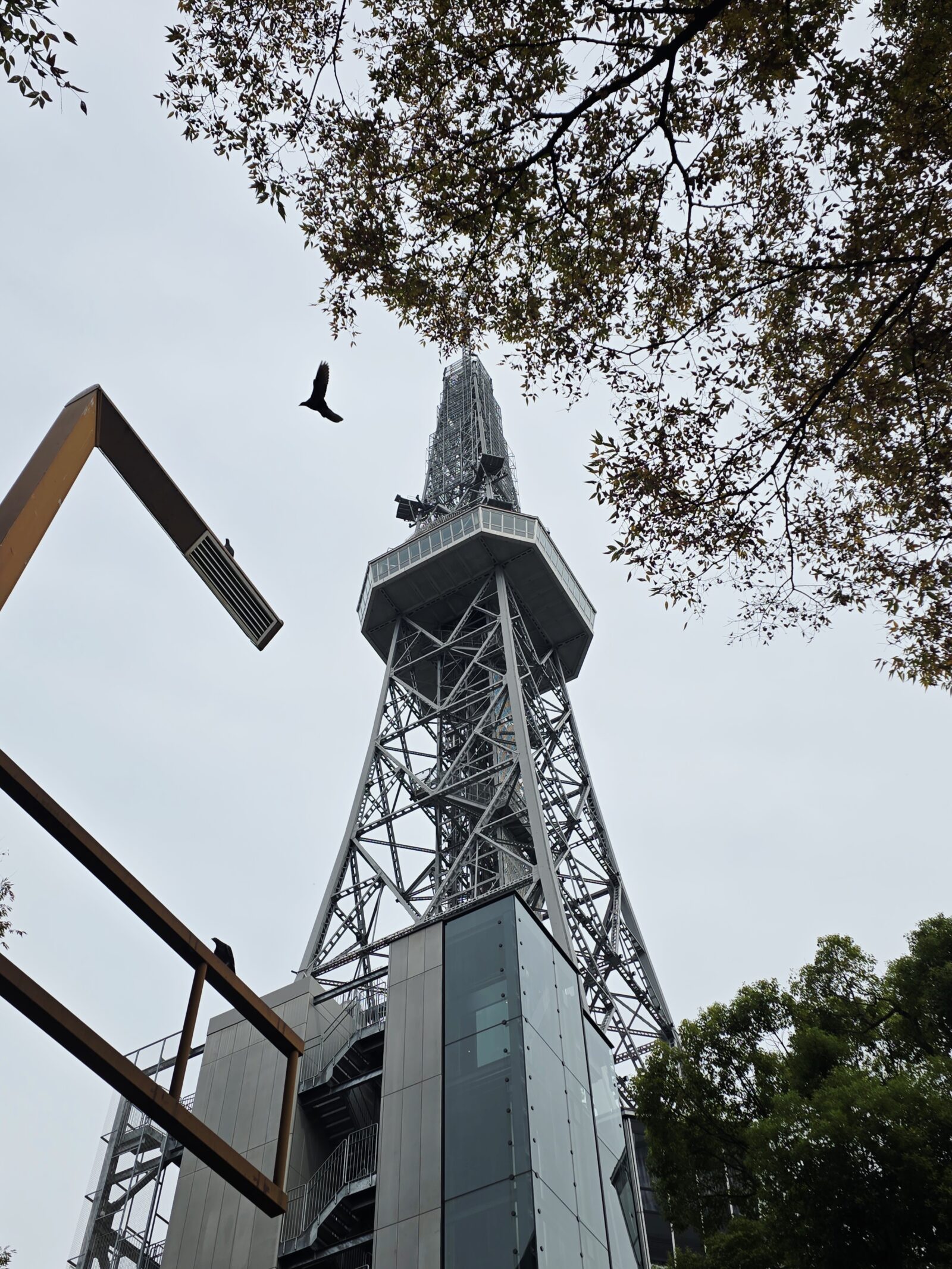
Nagoya Castle: Standing Strong Through Time
From Sakae, we made our way toward Nagoya Castle, one of Japan’s most iconic landmarks. It’s about 15–20 minutes by subway or a brisk walk if you enjoy moving through city streets.
When we arrived, we learned the main keep is still under renovation. Instead of being disappointed, we took it as a sign to slow down and simply enjoy what we could. The outer grounds were peaceful, framed by moats, stone walls, and tall trees that rustled softly in the wind.
The golden shachihoko — mythical tiger-fish ornaments that gleam atop the castle roofs — caught the sunlight perfectly. Even from outside, you can appreciate their beauty.
We stood there for a while, imagining how this castle must have looked centuries ago when Tokugawa Ieyasu ordered its construction in 1615. It once served as the seat of the Owari branch of the Tokugawa clan, and even after destruction during World War II, it was rebuilt with care and pride.
Though we didn’t enter, just walking along the moat and garden paths felt worthwhile. History doesn’t always need to be touched — sometimes it’s enough to stand close to it, feel the presence of time, and breathe in its stillness.
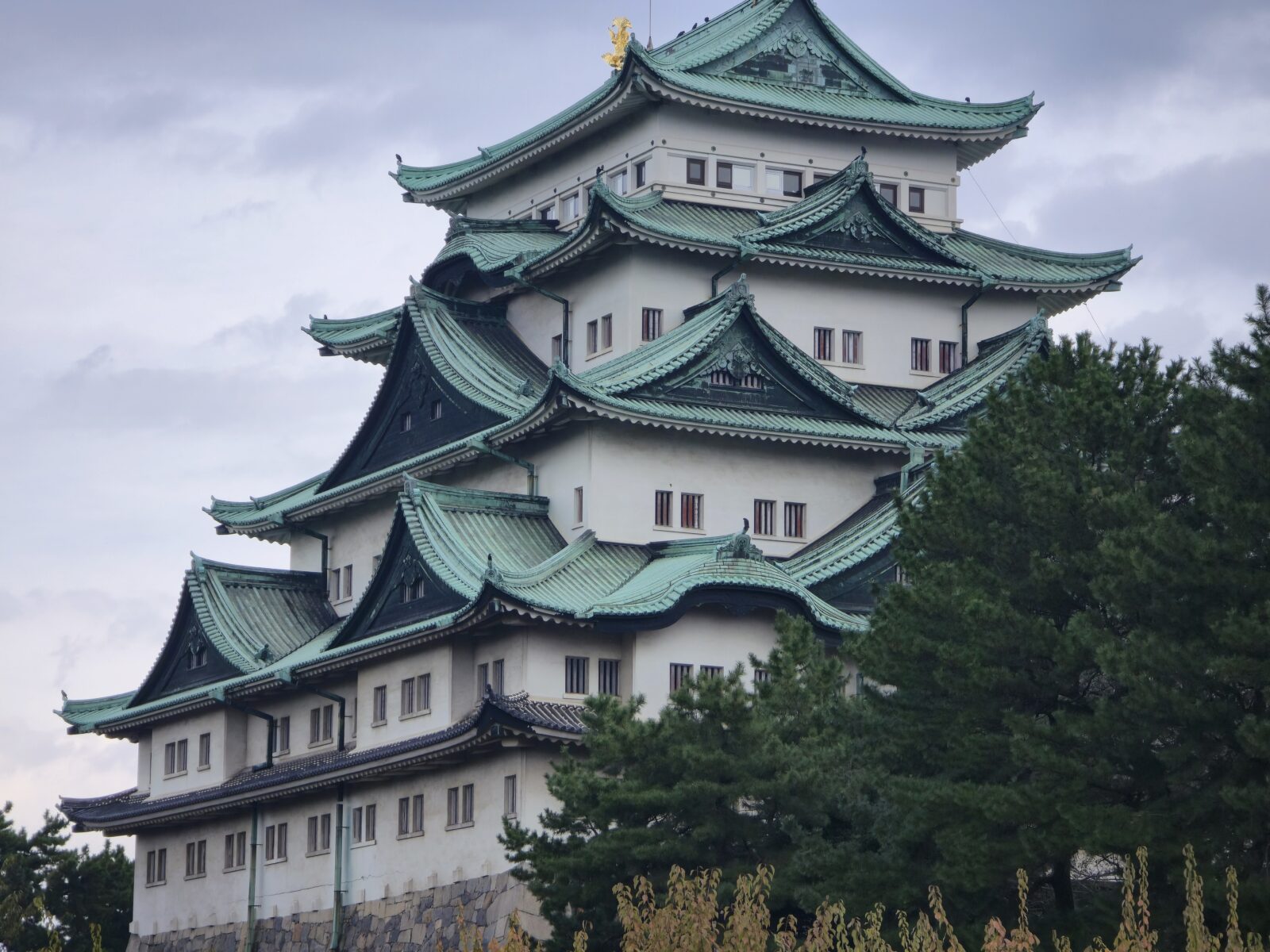
Café Break at Arcoba: Italian Comfort in Japan
After our castle stop, we felt the chill settling in and decided to take a break before heading to Osu. On the way, we found a cozy spot called Arcoba, an Italian café and restaurant tucked along the route.
It was warm inside, with soft lighting and quiet background music. We chose a table by the window, where the afternoon light painted everything in gold. I ordered tiramisu and café au lait, and my husband went for something simple to drink.
The tiramisu was light yet rich — a perfect blend of coffee and cream. It reminded me of autumn comfort, that satisfying balance between sweetness and warmth.
We didn’t speak much at first, just enjoyed the moment — that kind of silence that feels easy, not empty. Sometimes, a café stop becomes more than just rest; it becomes the heart of the day.
Looking around, I saw locals chatting, couples sipping espresso, and friends laughing softly over dessert. It was a reminder of why I love Japan’s café culture — the attention to detail, the gentle service, and the way each café holds its own quiet charm.
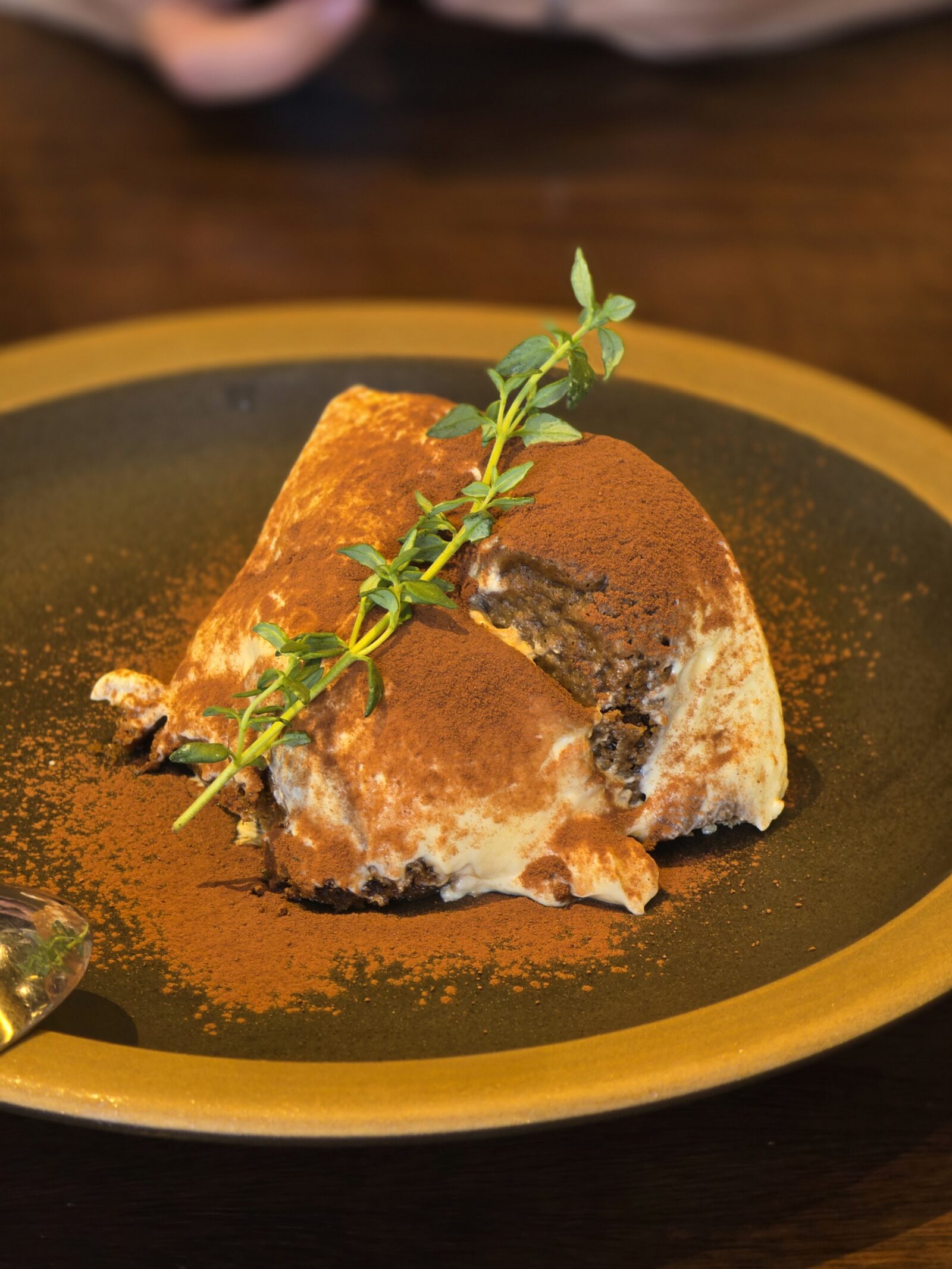
Osu Kannon Temple & Shopping Streets: Old Meets New
Recharged, we continued to Ōsu Kannon Temple (大須観音) — one of Nagoya’s most beloved spots. The temple is dedicated to Kannon, the goddess of mercy, and dates back to the Kamakura period before being moved to Nagoya in the early 1600s by Tokugawa Ieyasu.
As we arrived, we were greeted by the sight of red temple gates and the sound of pigeons fluttering near the main hall. A few worshippers were lighting incense, bowing deeply before the statue of Kannon, while others tied omikuji (fortune papers) to the strings nearby.
The atmosphere was peaceful yet lively — a balance between spiritual and social.
Just beside the temple stretches the Osu Shopping District, a maze of over 1,200 shops offering everything from vintage clothes to electronics, anime goods, and street food. We strolled through the covered arcades, where the smell of takoyaki and taiyaki filled the air.
It reminded me of walking through the old markets in other Japanese towns, except Osu has a more youthful twist. We saw students in uniform, foreigners hunting for bargains, and older locals chatting with shop owners.
We didn’t buy much — just a few small snacks and a souvenir charm from the temple — but walking there felt vibrant and fun, especially in the cool autumn air.
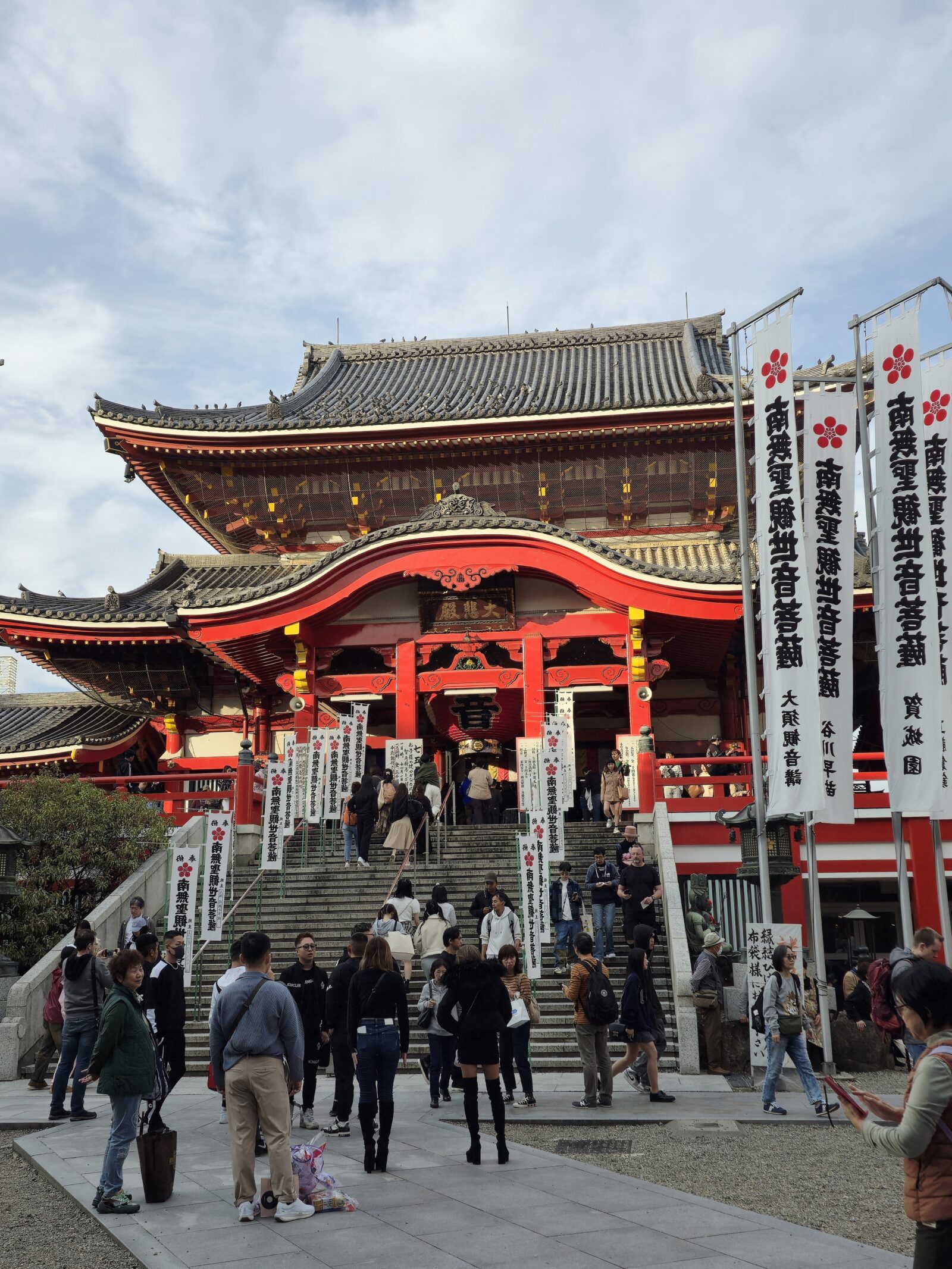
Returning to Nagoya Station & Ending the Day at a Local Izakaya
As the sky began to dim, we slowly made our way back toward Nagoya Station. The city lights began to glow softly, reflecting off building windows and puddles from earlier drizzle.
Instead of grabbing another drink in the city, we decided to take the JR train back home to Gifu and end the night nearby. After a short rest, we went out to a cozy izakaya in our neighborhood — a small place with regular customers, good food, and that warm, familiar smell of grilled skewers and soy sauce.
We shared a few dishes, clinked our glasses, and quietly celebrated a day well spent. It felt nice — to explore somewhere new, yet end the day in a place that feels like home.
An Ideal Itinerary for a One-Day Trip to Nagoya
If you’re planning your own day trip from Gifu (or nearby prefectures), here’s an ideal itinerary that balances sightseeing, relaxation, and good food — much like ours.
9:00 – Depart Gifu Station (JR Line)
→ Enjoy the short, scenic ride — about 30–40 minutes depending on train type.
10:00 – Arrive at Nagoya Station → Subway to Sakae
→ Start your day in the city center.
11:00 – Lunch at TGI Fridays or local restaurants in Sakae
→ If you crave Japanese flavors, try “Yabaton” for miso-katsu or “Atsuta Houraiken” for hitsumabushi (grilled eel rice).
12:30 – Explore Sakae / Oasis 21 / MIRAI Tower
→ Take photos, shop, enjoy the architecture.
13:30 – Visit Nagoya Castle
→ Stroll the grounds; if open, explore the reconstructed Hommaru Palace.
15:00 – Café stop at Arcoba
→ Relax with dessert and coffee.
16:00 – Head to Ōsu Kannon Temple and Osu Shopping District
→ Browse, snack, and experience local culture.
17:30 – Return to Nagoya Station, then take the train home to Gifu.
→ Dinner or drinks can continue at home for a cozy finish.
Must-Try Nagoya Meshi (Local Specialties)
Even though we had Western food this time, Nagoya is famous for its own distinctive cuisine known as Nagoya Meshi — a blend of bold flavors and comforting dishes. Next time, I plan to focus more on these:
- Miso-katsu (味噌カツ) — Deep-fried pork cutlet with rich red miso sauce.
- Hitsumabushi (ひつまぶし) — Grilled eel rice eaten three ways.
- Tebasaki (手羽先) — Crispy, seasoned chicken wings.
- Kishimen (きしめん) — Flat, broad udon noodles in light soy broth.
- Tenmusu (天むす) — Rice balls with tempura shrimp inside.
Nagoya’s food scene is bold, cozy, and wonderfully different. Locals call it Nagoya Meshi — dishes born here that carry the city’s rich, slightly rebellious flavor. Even if our trip started with Western food, I couldn’t help listing all the things I want to try next time.
Yabaton — Home of the Famous Miso-Katsu
If there’s one dish that defines Nagoya, it’s miso-katsu — a deep-fried pork cutlet drenched in thick red hatcho miso sauce. The balance of sweetness and bitterness is unforgettable.
At Yabaton, which opened in 1947, the tonkatsu arrives perfectly crisp, topped with a glossy layer of their signature miso. The main shop in Yaba-chō near Osu feels retro and friendly, and you’ll also find branches in Sakae, Nagoya Station, and even Centrair Airport. Their waraji tonkatsu — “sandal-sized” cutlet with both miso and classic sauce — is a fun way to taste two flavors in one.
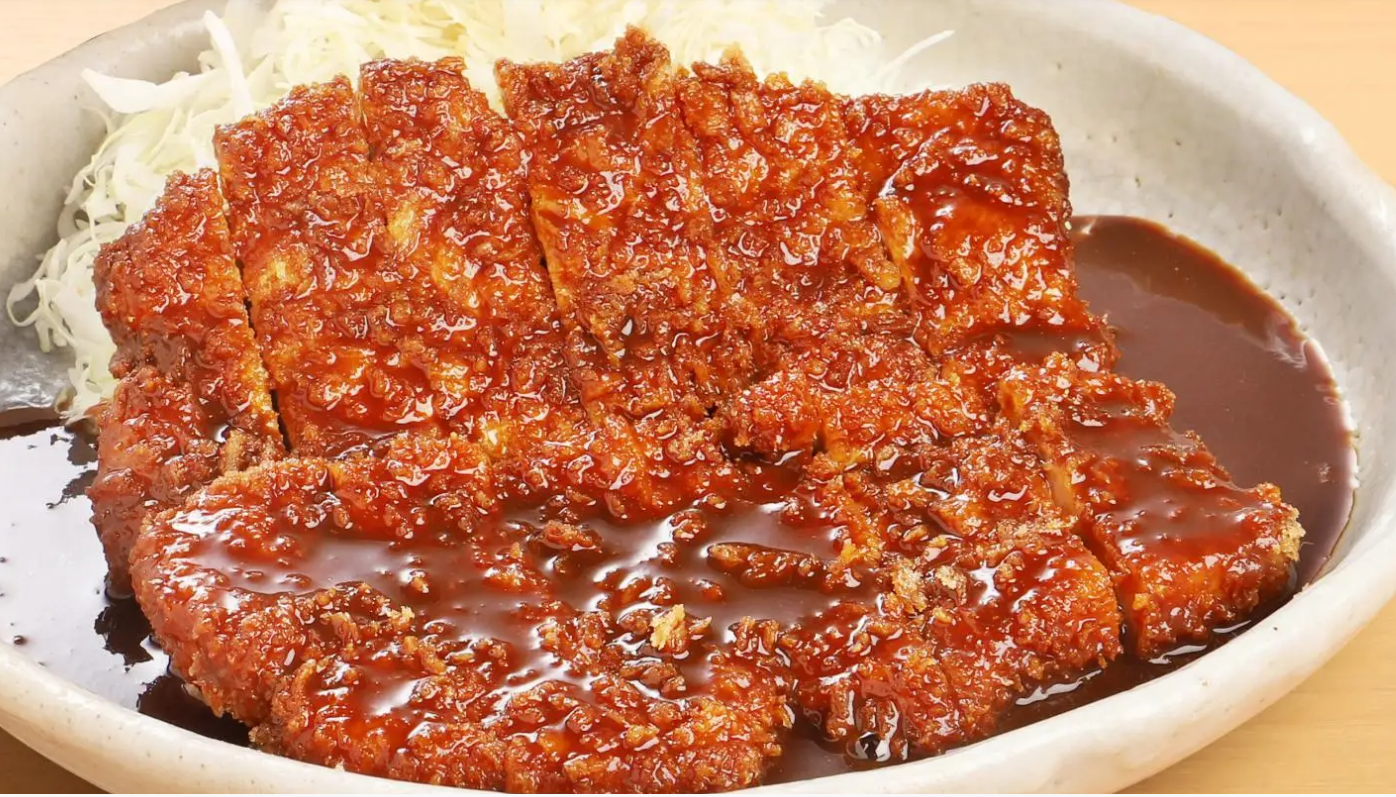
Atsuta Houraiken — The Art of Hitsumabushi
For something elegant, head to Atsuta Houraiken, the birthplace of hitsumabushi, Nagoya’s special grilled-eel rice. The unagi is cooked over charcoal until lightly crisp, then sliced and served with rice, condiments, and broth. You divide it into four servings — eat one plain, the next with toppings, the third as ochazuke (pouring broth over), and the last however you like.
The main branch sits near Atsuta Shrine, and another convenient branch is inside Matsuzakaya Sakae. It’s not cheap (around ¥4,000 per set) but feels like a culinary ceremony rather than just lunch.
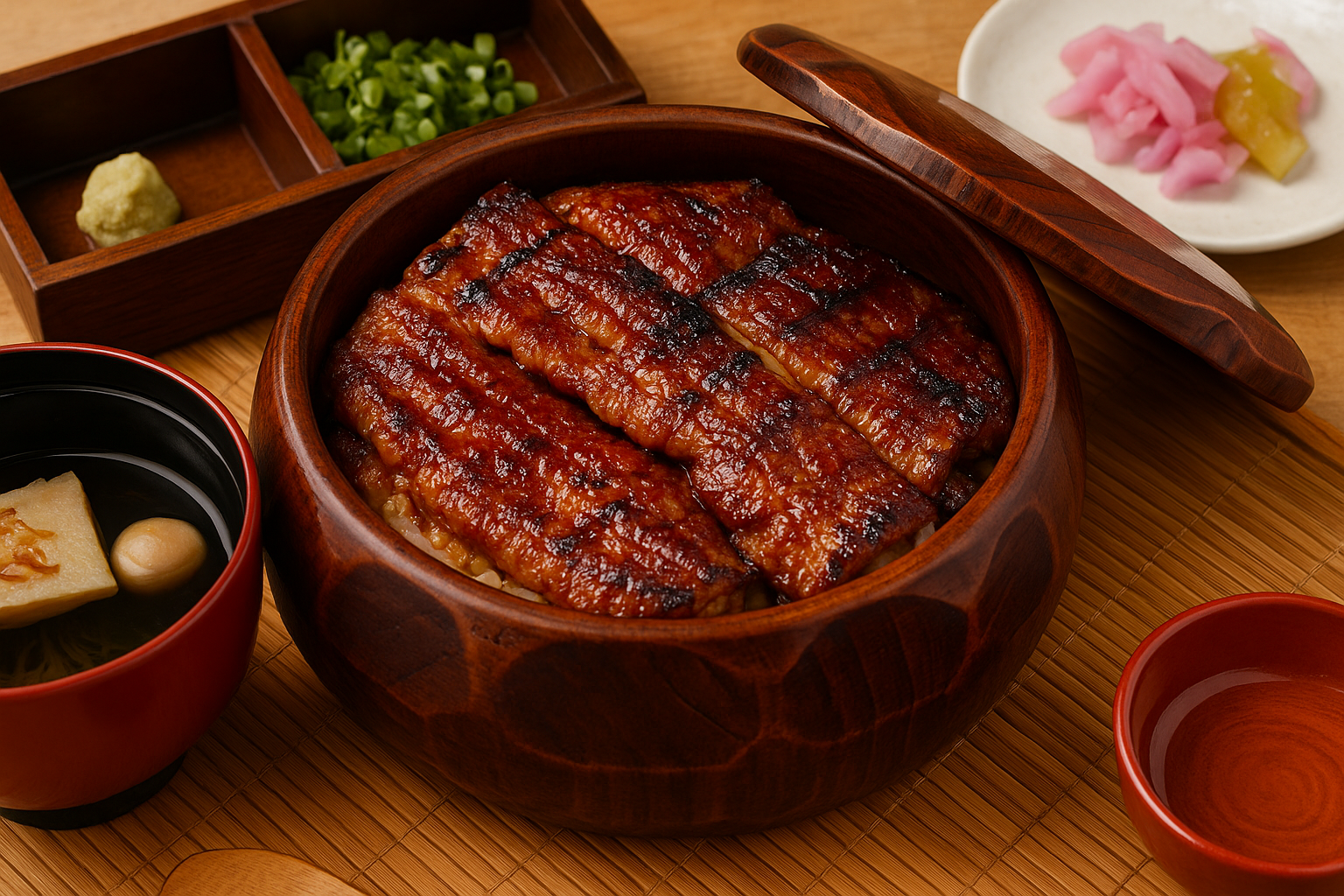
🍝 Ankake Spaghetti — Peppery Comfort on a Plate
Nagoya even reinvented pasta. Ankake spaghetti comes with thick noodles lightly fried before serving, then covered in a glossy, peppery tomato-meat sauce. It’s hearty, spicy, and slightly nostalgic.
The original Spaghetti House Yokoi near Sakae has been serving it since 1961, and its “Milano” with sausage and vegetables is a local legend. If you prefer a milder version, try Sole near Nagoya Station or Karametei, known for a sweeter sauce that feels homemade.
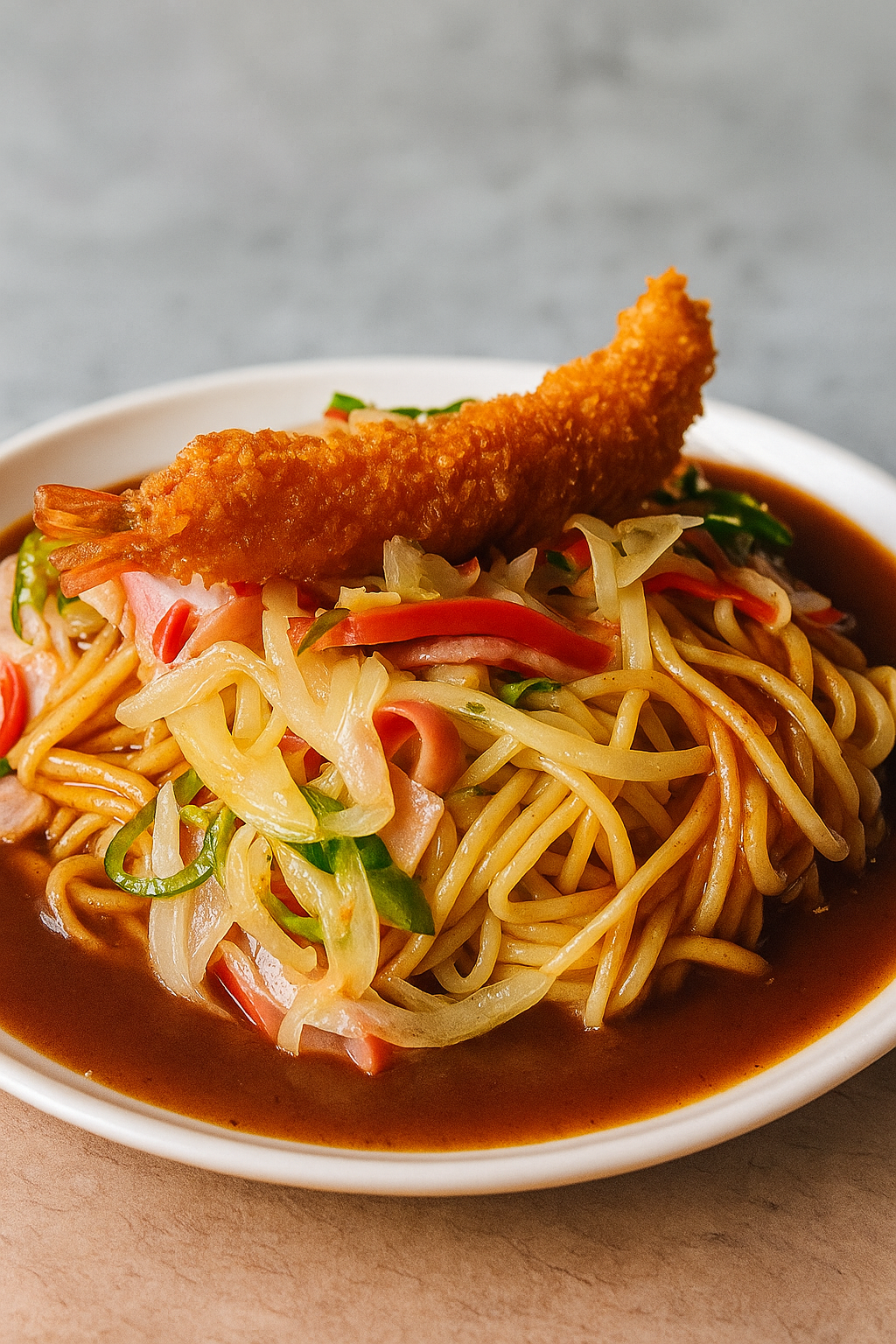
No Nagoya night is complete without tebasaki, the city’s famous chicken wings. They’re double-fried for crispness and coated with sesame, pepper, and a hint of sweetness. While Sekai no Yamachan is the most famous name, locals often prefer quieter spots with more balanced seasoning.
- Furaibō (風来坊) – The true originator of Nagoya-style tebasaki. Their wings are lightly glazed before frying, creating a delicate sweetness and perfect crispness. Each piece is sprinkled with sesame and pepper for that irresistible contrast. Branches are easy to find around Sakae and Nagoya Station.
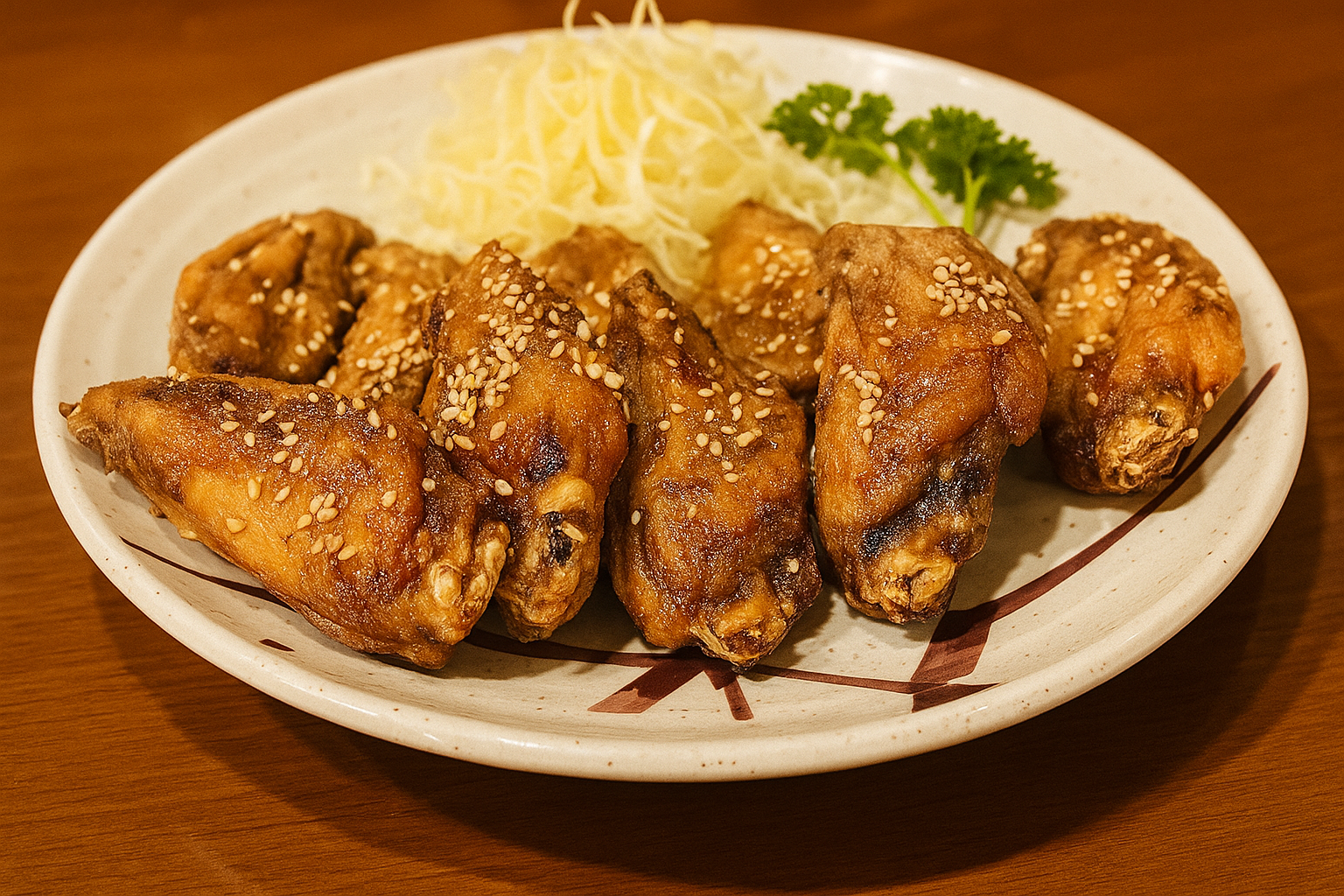
Extra Stops for Curious Travelers
If you have extra time or want to extend your day trip, consider adding:
- Nagoya City Science Museum — Known for one of the world’s largest planetariums. Great for families or curious adults.
- Toyota Commemorative Museum of Industry and Technology — Close to Nagoya Station; highlights Japan’s industrial evolution.
- Hisaya Odori Park — Perfect for spring cherry blossoms or autumn strolls.
- Endoji Shopping Street — A nostalgic arcade with retro shops and quiet charm.
Travel Tips
- Getting There: JR lines from Gifu to Nagoya (e.g., JR Tokaido Line). One-way ticket ~¥570; about 30–40 minutes.
- Getting Around: Subway day passes are convenient for multiple stops.
- When to Go: Spring and autumn offer pleasant weather and soft light for photos.
- Budget: Around ¥6,000–¥8,000 per person covers food, transport, and small treats.
- Language: English-friendly menus are common in Sakae and Osu, but a few Japanese phrases go a long way.
- Pacing: Don’t rush — Nagoya feels best when you go slow.
Reflections: Why This Day Mattered
As we settled into our train seats heading back to Gifu, I thought about why this small day trip meant so much. Maybe it’s because, amid the rhythm of work and everyday life, days like these remind you how simple happiness can be — a train ride, a shared meal, the comfort of walking side by side.
Nagoya didn’t overwhelm us with too much. It offered just enough: energy, flavor, history, and warmth.
For my husband, it was a day to recharge; for me, it was another gentle chapter of our life in Japan — proof that adventure doesn’t always need distance, just curiosity.
I looked out the window as the city lights faded, and I quietly smiled — grateful for the little journeys that make everyday life feel fuller.
Final Thoughts
If you’re living in Gifu or nearby prefectures, Nagoya is the perfect one-day getaway — lively but manageable, modern yet full of history, and filled with food that tells stories.
You can design your trip just like ours — start late, explore slowly, and end early evening — or create your own route including museums, towers, and culinary stops.
Whether it’s your first time or your tenth, Nagoya always offers something familiar and new at once.
And for couples like us, sometimes all you need is a train ride, good food, and a few quiet hours to walk hand in hand in a different city.
Until next time, Nagoya — ありがとう for another Oishii Day.

